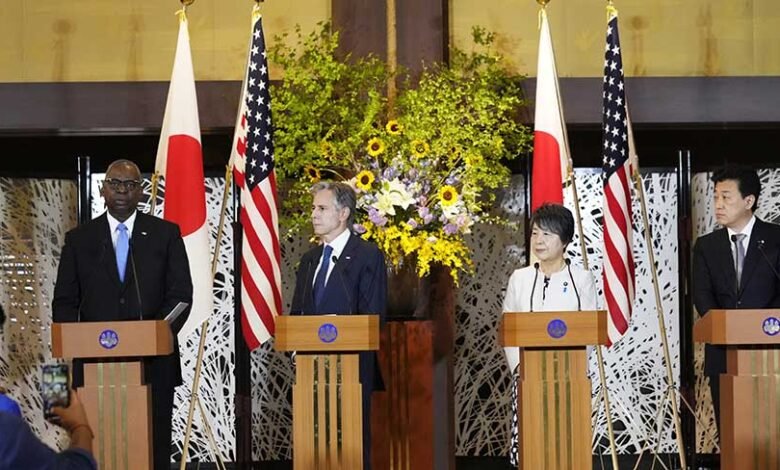The United States is making a consequential and historic upgrade to its U.S. Forces Japan, which will become a Joint Force Headquarters allowing for greater interoperability between the U.S. military and the Japan Self-Defense Forces.
“We welcome an historic decision to modernize our Alliance command and control to better meet the challenges of today and tomorrow,” U.S. Defense Secretary Lloyd Austin said. “This will be the most significant change to U.S Forces Japan since its creation and one of the strongest improvements in our military ties with Japan in 70 years.”
The Joint Force Headquarters will expand missions and operational responsibilities and promote deterrence to ensure a Free and Open Indo-Pacific. The announcement came in late July 2024 during meetings in Tokyo among Japanese Defense Minister Minoru Kihara, Japanese Foreign Minister Yoko Kamikawa, U.S. Secretary of State Antony Blinken and Austin.
“We are standing at a historic turning point as the rules-based, free and open international order is shaken to the core,” Kamikawa said. “Now is a critical phase when our decision today determines our future.”
The Chinese Communist Party (CCP) conducts illegal, coercive, aggressive and deceptive tactics throughout the region, including around the self-governed island of Taiwan, which Beijing threatens to annex by force, and in the South China Sea. There, Chinese coast guard and maritime militia have targeted Philippine military and civilian vessels in a yearslong campaign of aggression and harassment.
An international tribunal in 2016 rejected the PRC’s arbitrary sovereignty claims over most of the South China Sea as legally invalid. The ruling rebuked Beijing’s behavior in the global trade route, including its construction and militarization of artificial maritime features in Philippine waters and elsewhere.
The Japanese and U.S. leaders also cited the “increasingly deteriorating regional security environment, including North Korea’s continued destabilizing behavior and sustained pursuit of its unlawful nuclear and ballistic missile programs, [the PRC’s] accelerating and opaque expansion of its nuclear arsenal, and Russia’s undermining of arms control and the global nonproliferation regime, including through its expanding military cooperation and unlawful arms transfers with North Korea.”
The U.S. command reorganization is scheduled for 2025 to coincide with Japan’s establishment of its own Joint Operations Command. The aim is to facilitate deeper interoperability and cooperation, the statement said. It also will enhance intelligence coordination, surveillance, reconnaissance and cybersecurity.
The Joint Force Headquarters will have a direct role in planning and leading U.S. forces in peacetime and during potential crises. The headquarters command will report to the U.S. Indo-Pacific Command commander. Japanese and U.S. forces will remain under their respective national commands, rather than under an integrated command structure as the U.S. has with the Republic of Korea.
U.S. Forces Japan, established in 1957, includes about 54,000 U.S. Air Force, Army, Marine Corps and Navy personnel stationed in Japan pursuant to the U.S.-Japan Treaty of Mutual Cooperation and Security of 1960.





